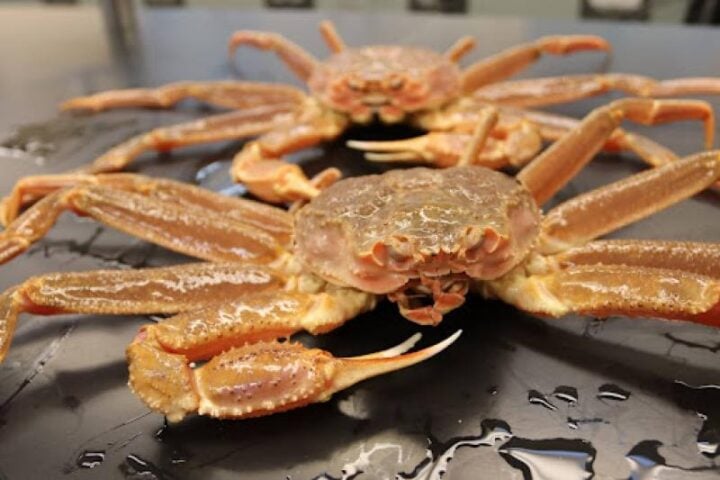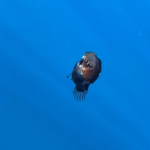An award-winning photographer of marine oceans, Gabriel Guzman, recently captured imagery of coral spawning, which offers insightful information on the environmental and technical aspects of marine photography. Gabriel Guzman, known for his dynamic ocean photography skills, explained his experience documenting coral spawning in a chat with Karmactive.

Guzman emphasised the value of timing and care in capturing the fleeting moments of coral spawning. He says, “You need to get in the water early and wait,” which reflects how unpredictable coral activity can be. This is consistent with research showing that coral species have different spawning times, which can be anywhere from a few minutes to many hours after sunset. He explained to Karmactive how he used specialised underwater photography equipment, which is renowned for its durability and high-resolution capabilities, under these difficult light and movement conditions.

Gabriel elaborates on how he had a wish to be a marine photographer instead of wasting four years of his life studying business management while talking about starting his career as an ocean marine photographer in Carines, Australia. He told Karmactive, “I am just a dive instructor and a photographer, and while you go around, you see something that you haven’t seen before or a creature, then you start taking photos. Later, you can analyse it on-screen and do some research on the internet.” He emphasised his interest in the ocean and capturing different subjects and animals for later learning.

Guzman’s method of taking marine photos—which goes beyond simple documentation—was highlighted as a valuable instrument for environmental preservation. It has been said that his photos have played a significant role in bringing attention to the beauty and fragility of aquatic environments. “My goal is to show people what is underneath the surface… photography and videography can create a huge impact,” he said.

He highlights the necessity of patience in photography, “One has to be very patient to be able to capture the moment, as corals don’t have a timing clock. If you check them faster, the coral is going to be ready in a couple of minutes, so it’s all about being patient, it’s all about waiting. The best thing you can do is just swim around and keep your eyes open, look everywhere.”

Gabriel discusses the impact of marine photographs, stating to Karmactive, “As a photographer, my goal is to show people what is underneath the surface. A lot of people don’t have access to the ocean or even less to what I can see on a daily basis. So, photography and videography can create a huge impact on people. I have been using social media to share my works. I can create and show people how beautiful the ocean can be, what we have right now, and what we can do to help preserve it, to keep it the way it is,” Gabriel added.

Explaining his recent experiences with soft and hard coral spawning, he notes, “One of them wiggles around, and they are very soft and nice, and the other one is a hard structure. In terms of spawning, soft corals are more challenging to film or to photograph. However, it’s only the hard corals, the ones that are super interesting for photographers and videographers, because you can capture so many details, and you can get some unique shots only with the hard corals.” In terms of technical details, the challenges and rewards of photographing different coral types were shared by Guzman. “Soft corals can be extremely beautiful to watch; however, in terms of spawning, they are more challenging to film or to photograph due to the size of the eggs,” he mentioned. This distinction affects the choice of equipment and techniques in underwater photography.

Reflecting on the significant changes observed since 2016, Gabriel shares, “I mostly look for the state of the reef, the condition of the reef, that means the amount of healthy corals that would be the priority for me. What I am noticing is that in 2016, we had a huge bleaching event, we just lost a lot of corals, some of them recovered while others died, and since 2016, every year that I have noticed, the reef is looking better.” However, Guzman’s documentation placed a strong emphasis on how climate change is affecting marine ecosystems, particularly coral reefs. Guzman did, highlight persistent dangers to Karmactive, saying, “with the increases of the water temperatures… we might have another bleaching event.”

He even shares a powerful message of self-learning, “You can learn by yourself if you want,” Gabriel stated in the Karmactive interview. “We live in a world where you can have most of the information from your phone. It’s not really necessary to attend a university and get a degree for it. In my case, I have studied but really worked in my field. But I know that if you are interested in what you are looking at and you want to learn, it’s all about self-study. You just can learn by yourself, and you can get information from somewhere.”

Describing his memorable experience with mink whales, Gabriel shared, “Mink whales are super inquisitive and curious, and they are going to approach the divers very much. They don’t get too close to you and slowly check you out. So, I think swimming with mink whales is one of my favorite interactions of all time. But I think interacting with such big creatures and such smart animals can make them want to be with you. I think it is very special when you are involved in protecting them.”
Guzman acknowledged the ethical considerations in wildlife photography. The ethics of wildlife photography were reflected in the preservation of a balance between photographing marine life and causing the least amount of harm to their ecosystem.

Guzman’s work has been observed to have economic and social ramifications, particularly in the areas of marine tourism and conservation. His images offer a distinctive underwater viewpoint, boosting regional businesses and promoting ecotourism.
Guzman made references to upcoming marine conservation initiatives and objectives. He asserted, “I’m not involved in any particular project for anyone; however, I am doing my own little project about comparing very specific types of the reef with photography,” highlighting the unique contributions made by individuals to larger conservation initiatives.

Lastly, Gabriel expresses his willingness to collaborate, saying, “My field will always be in the visual area, trying to capture the best sometimes. So many things that you can hear in so many places in the world. I like to reply to those with answers with photographs and videographs through the popular platform Instagram post. I will have to do, I am always happy to collaborate with different types of vlogs, podcasts, or magazines, or anything, as long as you know, give the right information about it, and it can reach out to a larger group,” Gabriel added with the Karmactive interview.


















